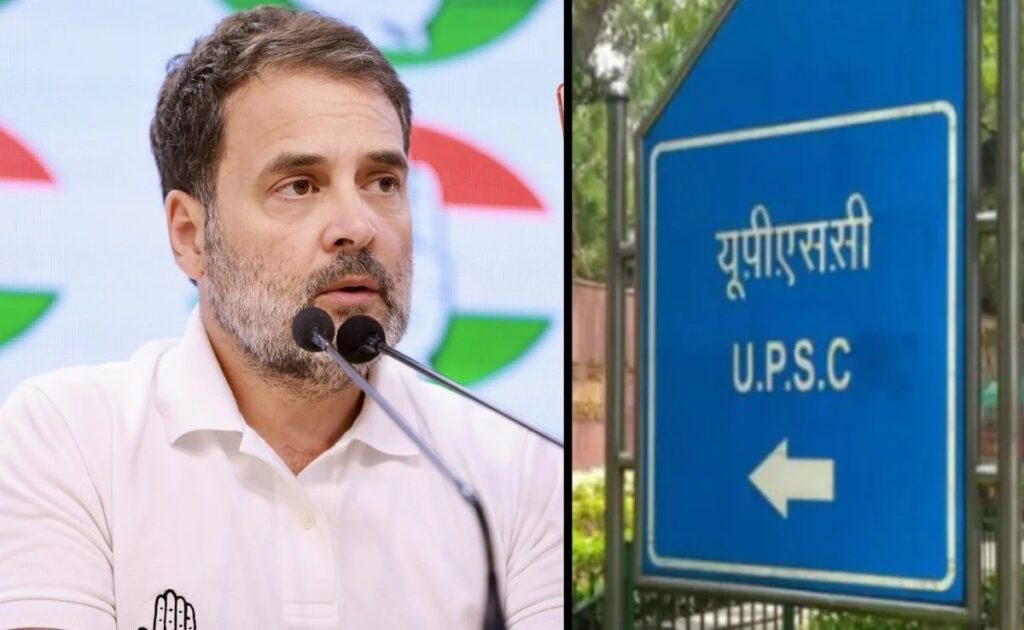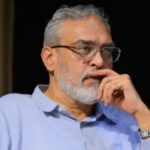Congress Leader Rahul Gandhi Criticizes Lateral Entry Concept, BJP Defends It as a Congress-Initiated Policy.

New Delhi: The Union Public Service Commission (UPSC) has released an advertisement calling for “talented and motivated Indian nationals” to apply for various senior positions in the Union government. The roles, which include Joint Secretary, Director, and Deputy Secretary across 24 ministries, amount to a total of 45 vacancies. This announcement has sparked a debate over the practice of lateral entry into the bureaucracy, particularly in light of recent criticisms from Congress leader Rahul Gandhi. The BJP has responded by highlighting that the concept of lateral entry was first introduced during a Congress-led government.
Understanding Lateral Entry
Lateral entry refers to the recruitment of individuals from outside the traditional government service cadres, such as the Indian Administrative Service (IAS), for mid and senior-level positions within government departments. This practice was formally introduced during Prime Minister Narendra Modi’s administration, with the first vacancies announced in 2018. This approach deviates from the traditional system where senior bureaucratic roles were predominantly filled by career civil servants.
Lateral entrants are generally hired on contracts ranging from three to five years, with possible extensions based on performance and the evolving needs of the government. These professionals are expected to bring specialized knowledge to address complex governance and policy challenges.
The current UPSC advertisement includes positions at three levels: Joint Secretary, Director, and Deputy Secretary. These roles involve significant administrative responsibilities and decision-making within their respective departments. The government’s rationale for lateral entry is to inject fresh talent and enhance the availability of skilled personnel within the administration.
Historical Context
The concept of lateral entry is not new. It was first proposed during the United Progressive Alliance (UPA) government led by Congress in the mid-2000s. In 2005, the UPA established the Second Administrative Reforms Commission (ARC) under Veerappa Moily’s chairmanship to recommend reforms to the Indian administrative system.
In its 10th report, titled ‘Refurbishing of Personnel Administration – Scaling New Heights,’ the ARC strongly advocated for lateral entry. The report argued that certain government positions require specialized expertise not always available within traditional civil services, and recommended recruiting professionals from the private sector, academia, and public sector undertakings (PSUs).
Rahul Gandhi’s Criticism and BJP’s Defense
Lateral entry is an attack on Dalits, OBCs and Adivasis.
— Rahul Gandhi (@RahulGandhi) August 19, 2024
BJP’s distorted version of Ram Rajya seeks to destroy the Constitution and snatch reservations from Bahujans.
Rahul Gandhi has criticized the lateral entry process, accusing the Modi government of using it to recruit officers aligned with the BJP’s ideological mentor, the Rashtriya Swayamsevak Sangh (RSS). He alleged that lateral entry is being used to bypass the UPSC and undermine reservation policies for Scheduled Castes (SC), Scheduled Tribes (ST), and Other Backward Classes (OBC). Congress President Mallikarjun Kharge described it as a “well-planned conspiracy” to exclude marginalized communities from government jobs. Other opposition figures, such as Rashtriya Janata Dal’s Tejashwi Yadav and former Uttar Pradesh Chief Minister Mayawati, have also condemned the move, arguing it denies underprivileged candidates advancement opportunities.
Lateral entry
— Ashwini Vaishnaw (@AshwiniVaishnaw) August 18, 2024
INC hypocrisy is evident on lateral entry matter. It was the UPA government which developed the concept of lateral entry.
The second Admin Reforms Commission (ARC) was established in 2005 under UPA government. Shri Veerappa Moily chaired it.
UPA period ARC…
In response, the BJP has highlighted that the concept of lateral entry originated during the Congress-led UPA government. Union Minister Ashwini Vaishnaw noted that the ARC, chaired by Veerappa Moily, recommended lateral recruitment to fill specialized roles. He defended the current implementation by emphasizing that the recruitment process is transparent and managed by the UPSC, asserting that it will enhance governance by bringing in professionals with essential expertise.












